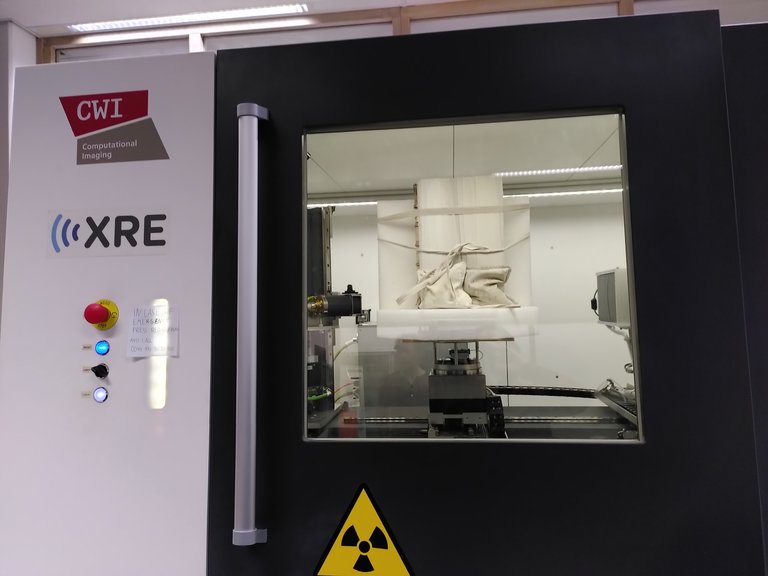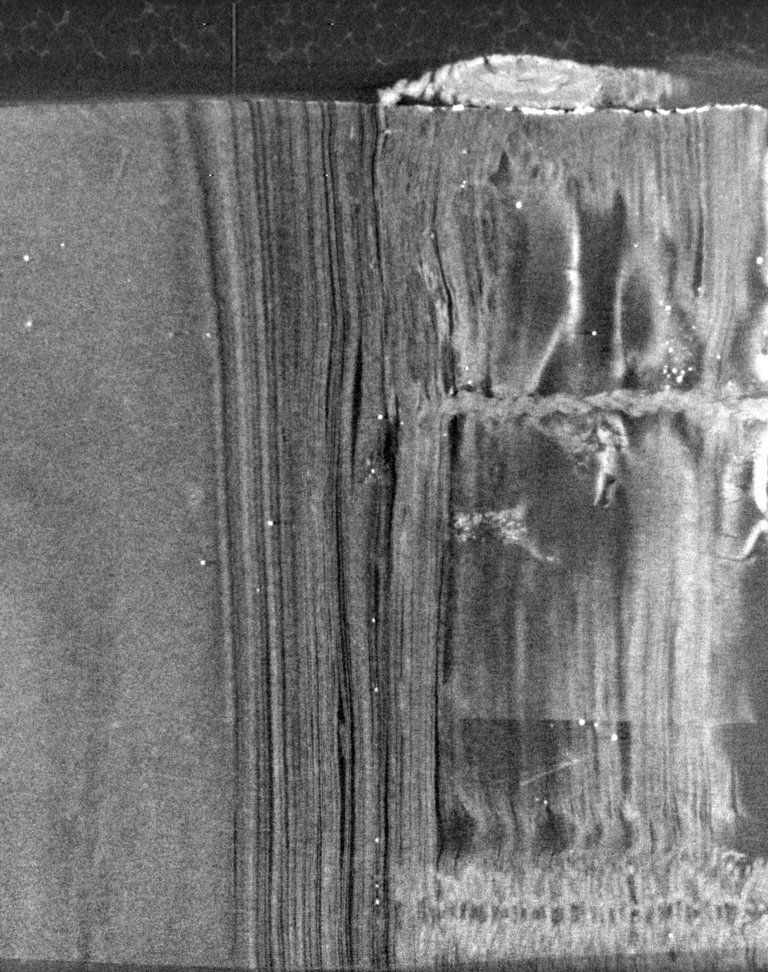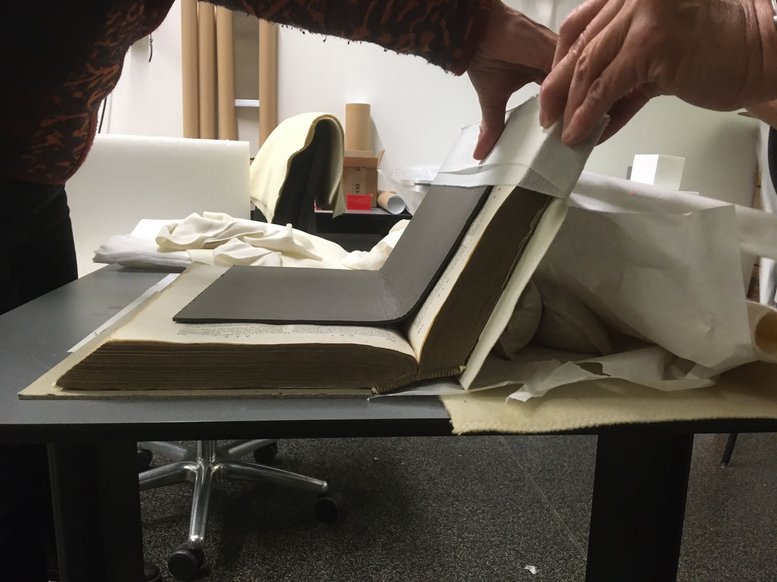You would rather not damage historical objects, and then having a scanner that allows you to see right through various materials is a big help. This led restorer Benita Jansma to ask the CWI if an almost 450-year-old dictionary from the Regional Archive Alkmaar could be scanned using the FleX-ray Lab's X-ray scanner.
The Greek dictionary – dating back to 1580 – was bound around 1600. "Parchment strips were used to reinforce the binding, especially along the spine," says Jansma's colleague Lisette Blokker, coordinator of the service team at the Archive. These strips were made from cut-up old books that were no longer in use. "That happened a lot in the 17th century," Blokker explains. "For reinforcing new bindings, Catholic books that had been discarded after the Reformation were often cut up."
Rare
What makes the discovery special is that the used strips are rare. That's why the archive wanted to know what readable text was still on the strips. This could provide important clues about the age and origin of the cut-up book. However, the parchment strips were glued to the spine of the book block, and some also served as endleaf guards. Blokker: "After Benita removed the bindings from the book block – which was relatively easy as they were partially detached – we were able to read the outside of the strips." However, the inside remained unreadable because they were still glued to the spine of the book.
"We wanted to keep the book block intact and leave the strips in place if possible. But the discovery was so remarkable that we also found it important to read both sides of the used parchment." With this question, Jansma approached CWI: can you make the text visible on the inside of the adhesive strips?



